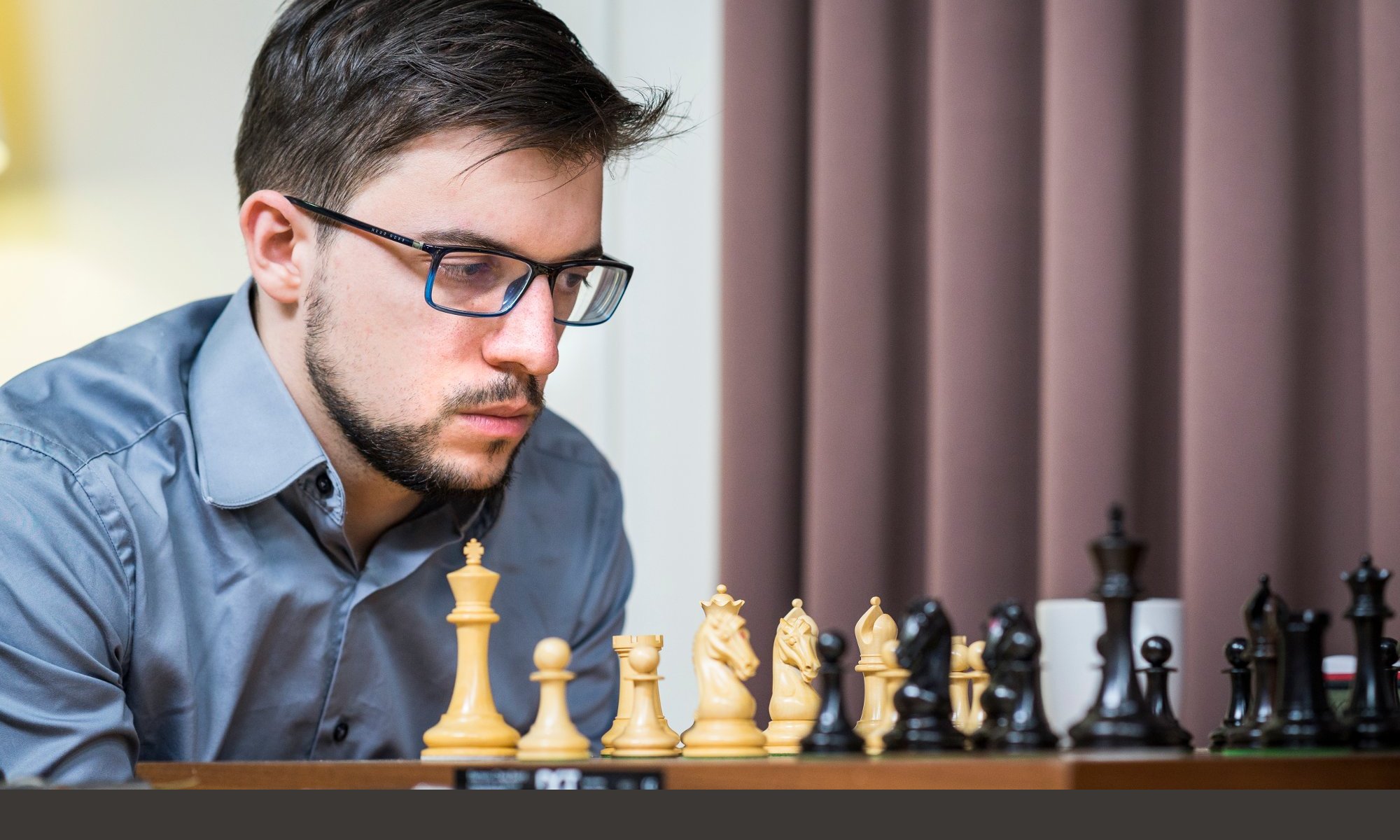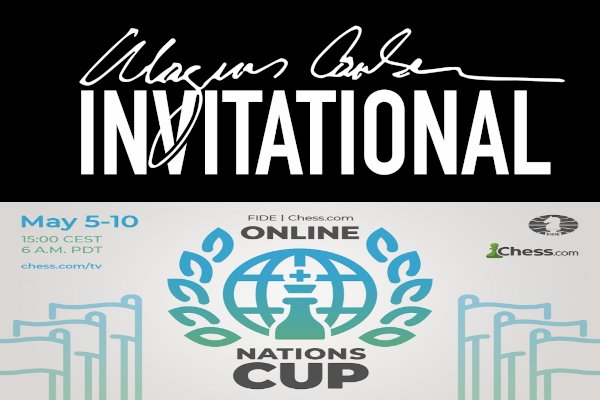With the pandemic’s installation in the long term, the world of chess has gone online. Tournaments abound and the activity is more and more intense, for top players as well as for amateurs all over the world.
In the last few weeks, I have had the opportunity to play two online
competitions in a row, the Magnus Carlsen Invitational and the Nations Cup.
CARLSEN INVITATIONAL
At the initiative of the world champion and his platform www.chess24.com, eight players met for a group phase qualifying the first four for the knockout rounds.
I think the system can be improved a little bit in the sense that, for example in the last round, there were a lot of games with absolutely zero at stakes. That’s the only downside, with the fact that the tournament was spread over a few too many days (16).
The next tournaments have just been announced, as part of an online « Carlsen Chess Tour », which takes over from the aborted 2020 Grand Chess Tour. The formula will be improved, including a much shorter group phase.
Concerning the rhythm of play, it seems to me rather ok, even if for me, 15’+10”, it’s still quite long 🙂 .
Four games in a row is pretty tough, though it might not seem so, but it’s still a manageable effort for the players. Moreover, the result over four games is obviously more significant when it comes to determining who was the best player of the day. So I have nothing against it.
I’m also sure that the show is rather pleasant for the audience as well, who was able to follow two games at the same time.
In fact, I can understand the idea of broadcasting two games at a time, not four, even if it makes the tournament longer. Four at a time would always be more complicated to manage technically, especially if there are Armageddon games, in which case it could quickly become very problematic.
All in all, it’s pretty nice to see online chess growing, though it’s a new experience. Of course, it’s not so easy to settle, but it’s been a bit of a challenge for (almost 🙂 ) all players. For me, it’s not easy to stay focused online, because the physical contact with the pieces is a bit lacking. And then there’s also the fact that we’re too used to playing on the Internet in one or three minutes. So 15+10 can seem like an eternity! I tried to manage all these parameters as best as I could…
For me, there was also the apprehension of « new openings », 1.d4 with white, the Slav and the Caro-Kann with black, which required a lot of energy. It caused some mistakes at times, because of a lack of experience in these positions.
The turning point of my tournament came in the second match, against Nepo, where I managed to lose a match that was almos won, that’s for sure 🙂 (2-2, loss at Armageddon). Then, there was the very complicated sequence Ding (2-2, loss at Armageddon) and then Carlsen, who happened to be stronger than me on this match (1.5-2.5).
It’s also true that if we add the third Armageddon game lost against Nakamura, these three defeats weigh heavily; in the end, it’s a last place instead of a mid-table ranking… But Armageddon is a rather special format for which I’ve never done any specific training. As a result, I don’t necessarily have the right calibration in terms of pace, between haste and loss of time. Also, my blitz style isn’t very well suited to Armageddon either; with black, I’m not used to playing for a draw with a minute less, and with white, I really try to put pressure on time, even if sometimes I have to go through some borderline positions.
It’s true that Armageddon doesn’t happen that often, but it’s a bit worrying to have a weakness like this one 🙂 . Yet I don’t think it’s a mental collapse or anything like that, but then again, I might be wrong… It’s hard to get answers on an exercise I’m not used to. But maybe that’s the answer; I’m not used to it!
Now let’s take a look at some of my performances in this tournament:
MVL-NEPOMNIACHTCHI (game 4)
After a very bad game with white when a draw was enough, I managed somehow to save the day and reach the following position:
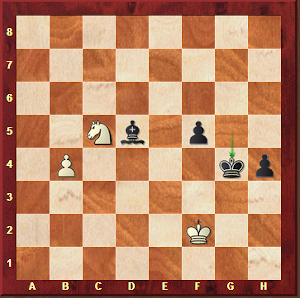
The position is far from simple to defend, even if it is objectively a draw. Unfortunately for me, I would have had to avoid 68.Nd3? f4! (but not 68…h3? 69.Ne5+! Kh4 70.Nf3+ and draw) 69.Ne5+ Kf5 70.Nd3 Be4, breaking the defensive coordination of my Knight and my King (0-1, 75 moves).
Instead, I could play 68.Nd7! and the fork threat on f6 prevents black from pushing …f4 as in the game. And after 68…Kf4 69.Nc5! (only move) 69…h3 (69…Bc4 70.Nd7 h3 71.Nc5! and black does not progress either) 70.Nd3+ Ke4 71.Ne1 or 70…Kg4 71.Ne5+!, the King-Knight duo is coordinated for a fortress! Needless to say that this kind of subtleties is impossible to understand when one plays on the increment 🙂 .
In the next two games, I experienced the horrors of the “mouse slip” and “misclick“: these are well-known dangers of online chess!
DING-MVL (Armageddon)
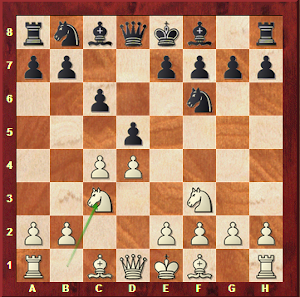
Here, I was so much expecting 4.e3, as in the first game of our match, that I mechanically made the premove 4…Bf5?!. But after 4.Nc3, …Bf5?! is considered inferior because of 5.cxd5 Nxd5 (5…cxd5 6.Qb3 almost loses a pawn) 6.Qb3. I never could recover, and lost this game without really fighting (1-0, 16 moves).
Second mouse accident…
MVL-CARLSEN (game 2)
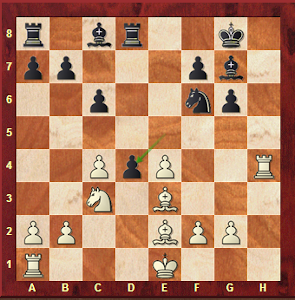
Here, my first intention was to play 16.0-0-0, so I clicked the King on e1. Then I saw the variation 16…c5 17.Bg5 Re8 18.Nd5 Nxd5, and 19.exd5 is impossible because of the Be2 hanging. So I decided to play 16.Rd1 to make this variation work… But without unclicking the King 🙂 ; then, when my Rook landed on d1, I saw to my great surprise that my King had also moved to c1 against my will! (draw, 61 moves).
CARLSEN-MVL (game 3)
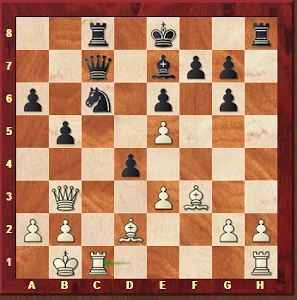
Here, I quickly played 19…Qd7?, which is a big mistake based on a tactical oversight. After 20.Qc2 Na7, I thought he wanted 21.Qe4, but I completely missed the possibility 21.Qxc8+! Nxc8 (21…Qxc8 22.Rxc8+ Nxc8 doesn’t offer any hope either) 22.Bc6, and I don’t have enough play for the exchange (1-0, 32 moves).
So I should have played the only move 19…Qb6, even if white would still be better after 20.exd4! (but not 20.Qc2 anymore, because 20…0-0! and the piece can’t be taken: 21.Bxc6? dxe3 22.Be1 Rc7! followed by 23…Rfc8).
CARUANA-MVL (game 3)
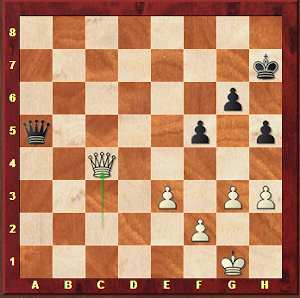
An instructive Queen endgame, with all the pawns on the same side, which one often tends to declare a draw without looking at the nuances of the position. Here, if we move back the f5-pawn to f7, it would indeed be an easy draw. As it is, I don’t know if the position is objectively winning or drawn, but intuitively I would rather say it is winning.
Indeed, with the pawn on f5, black’s King remains weak. It is very hard to avoid exchanging Queens. And when white will play g4, one will hardly escape from taking twice, after which white’s e-pawn will be passed.
But in practice in this kind of ending, it’s almost impossible to play without mistakes, especially in rapid games. And again, it’s always harder to defend because white can turn the position in any direction – which Fabiano did not hesitate to do! –
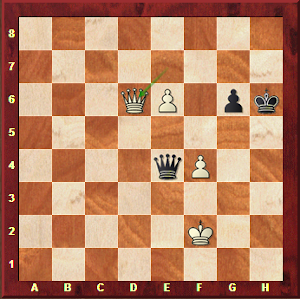
We had already played nearly 45 moves of the Queen ending, and I finally lost after the natural 88…Kg7? 89.Qc7+! Kh6 90.e7 Dd4+ 91.Ke2 Qe4+ 92.Kd2 Qd4+ 93.Kc2, for the simple reason that there is no perpetual, white’s King sneaking through the whole Queenside. (1-0, 103 moves).
To reach the draw, I would have had to find 88…g5! 89.Qf8+ (89.e7+ Kg7 90.fxg5 is a version which allows black to give perpetual according to the tablebases…) 89…Kh7 90.e7 Qd4+ and perpetual; just put white’s Queen on c7 in this position – as in the follow-up of the game – and there would be no more perpetual!
Chess is a complicated game 🙂 .
Maxime’s games:
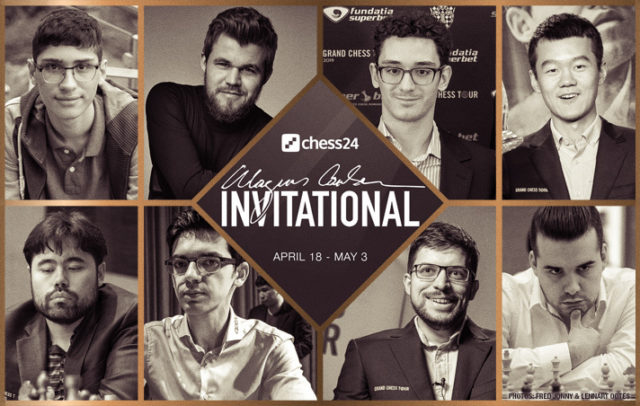
NATIONS CUP
A few days later, I held the first board of Team Europe in this competition, which gathered six teams and which saw the final victory of the Chinese favourites.
My play was definitely better in this Nations Cup, but there were also worse moments. Admittedly, the final result is rather satisfactory (+1, =9). But there were a lot of missed chances, against Radjabov for example:
RADJABOV-MVL (round 5)
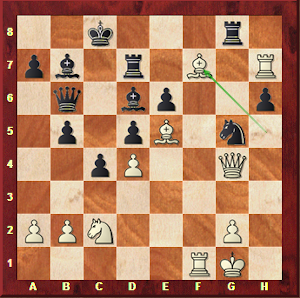
Black’s position is won, but there are lots of calculations to do, and three real candidate moves, 27…Rgd8, 27…Bxe5 and 27…Rxf7. I believe that, in fact, it was 27…Bxe5 the simplest in practice: I calculated 28.Bxg8 Nxh7 29.Bxe6 Nf6 30.Bxd7+ Kc7 31.Rxf6 Bxf6 and I said to myself that it was not the clearest – with always the problem of the Bishop on b7 – and that 27…Rgd8 was certainly cleaner. At this stage, I had already dismissed the third possibility 27…Rxf7, because of 28.Rfxf7 Bxe5 29.Rxb7; however I should have pushed further, because after 29…Nxh7! 30.Qxg8+ (30.Rxb6 Rxg4) 30…Kxb7 31.Qxh7+ Bc7 or even 31…Ka6, white will not survive.
In short, I rejected the simple continuation, then the effective one, and I finally made the least good choice, 27… Rgd8 🙂 . After this error, the game became extremely messy and ended in a perpetual (draw, 36 moves).
Second missed opportunity against Nakamura:
NAKAMURA-MVL (round 9)
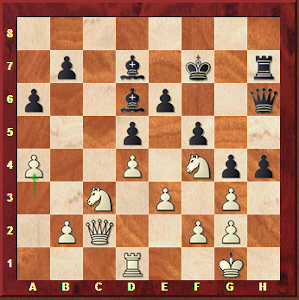
It was also a weak game on the whole, which was especially noticed for the easy win that I missed, 32…h3!. Yes, it is easy, but this oversight is also explained by the fact that for the previous eight moves, I was calculating the consequences of …hxg3 at each move; therefore, …hxg3 was like « anchored » in me, and to some degree prevented me to consider …h3 (draw, 36 moves).
Here’s my only win of the tournament, after a good opening and a good middlegame:
NEPOMNIACHTCHI-MVL (round 6)
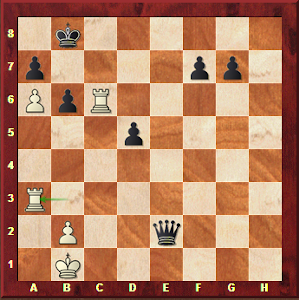
Only the realization of the advantage has not been convincing, but there is still an explanation. In practice, the conversion of this type of winning position is more difficult than defence. Because of the mating net around black’s King stuck on b8, it is very easy to go wrong.
Then, when the position becomes objectively drawn, it is the opposite!
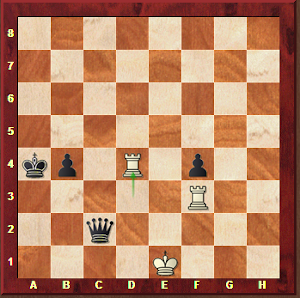
The position is very easy for me to play. Sure I can also make mistakes, but white has to watch out for every fork, every check, every pawn and it’s a real nightmare to defend (0-1, 111 moves).
It was therefore mainly for practical reasons that mistakes were made by both sides.
We will also note in passing the following very ridiculous game from both players…
DING-MVL (round 7)
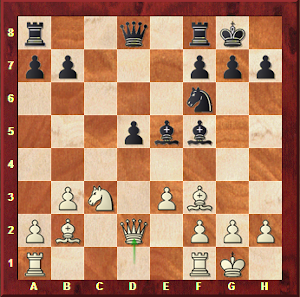
Here, I spent more than six minutes out of 14…Qe7?.
14…Ne4 was the normal move; this is what I had planned to play originally, but I didn’t want to defend the pawn down endgame after 15.Nxe4 dxe4 (15…Bxb2 16.Qxb2 dxe4 17.Be2 appealed to me even less) 16.Qxd8 Rfxd8 17.Bxe5 exf3 18.gxf3. So I preferred 14…Qe7 but I completely forgot that after 15.Nxd5 Nxd5, white doesn’t have to play 16.Bxd5? Rfd8 17.Rad1 Be4, but rather 16.Bxe5! and he’s a good pawn up.
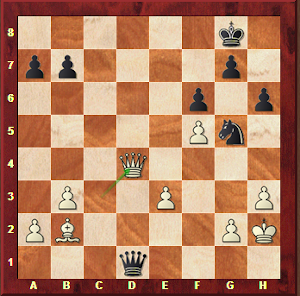
Then, Ding wasn’t precise and allowed too much counterplay, until I had a forced perpetual forced with 31…Nf3+! 32.gxf3 Qe2+ 33.Kg3 Qe1+ 34.Kg4 Qg1+ 35.Kf4 Qh2+ 36.Ke4 Qc2+ since if 37.Kd5?? Dc6 mate!
But I played 31…Qe1?! instantly because it was the move I had planned… After 32.Qd5+ Kh7 33.Bd4, I managed not to play the obvious 33…b6 – which would have more or less kept the dynamic balance of the position – to prefer the stupid 33…h5?, which throws away the game after 34.Bxa7 h4 35.Bb8!. Luckily, Ding was in the same shape as me that day, and he finally let me get the half point! (draw, 42 moves).
But there’s one game where luck wasn’t on my side…
MVL-ANAND (round 8)
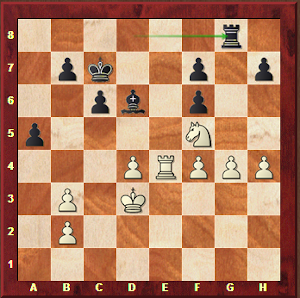
In fact, here the normal move was 38.g5! fxg5 39.fxg5 and Black continues to suffer. Instead, I played 38.Nh6, which is objectively less good, but with the original idea to trap black’s rook on h6 🙂 . By the way, Vishy also feared this variation since he did not play 38…Rg6 39.f5!? Rxh6 40.h5. During the game, we both considered that this strange position was favourable to white, while the machine seems to prefer black. The reality is probably that this endgame is a draw!
Even if the Rook is useless on h6, white will not be able to use their Rook vs Bischop advantage on the a-e columns if Black actively plays 40…c5, instead of waiting for white to himself open the position with d5! in favorable circumstances; for example 40…c5 41.dxc5 Bxc5 42.Kc4 Kc6 43.Re8 b5+ 44.Kd3 Bd6 and mainly because of the weakness on b2, it is white who must be careful – when black’s Bishop arrives on e5 – not to play Kc2 and allow the passage Kc6-d5-e4-f4-xg4 which would free the Rook from its prison!
In the game, Vishy thus avoided all that with 38…Rg7, on which I played 39.g5, leading to a draw after the very precise defence 39…fxg5 40.fxg5 f6!.
Too bad, it was a case of « too much brilliancy » with this 38.Nh6 🙂 .
In general, in both tournaments I didn’t cause enough problems with white, even if I got several good positions, ruined in only two or three sub-par moves. That’s also the 1.d4 effect!
A last word on the rhythm of the online games; 15 + 10, as for the Magnus Invitational, is the right cadence, even if the ideal in my opinion would be 15 + 5 🙂 .
However, the 25 +10 used at the Nations Cup is just not working. I think it’s much too long for online games. Even on the wooden board, it is already half-baked, either too long or too short. That is to say that it’s too short for you to be able to have really deep ideas, but it’s too long to be able to pose problems and set traps.
Maxime’s games:
Antonio Radic is a Croatian chess player. Amateur away from competition since his youth years, he has the particularity to be the most followed YouTubers in the chess world! With more than 630.000 subscribers, Agadmator (it is his stage name 🙂 ) leads a community twice as important as Magnus Carlsen for example. Prolific author of educational videos, Agadmator has just decided to launch regular podcasts with personalities from the chess world. His first guest was MVL, with whom he spoke for more than two hours! It is to be reviewed here: https://www.youtube.com/watch?v=mZ_EWAwZYmw
Finally, the session ended with a blitz, commented by Agadmator:
https://www.youtube.com/watch?v=88N3UNeNoWM
